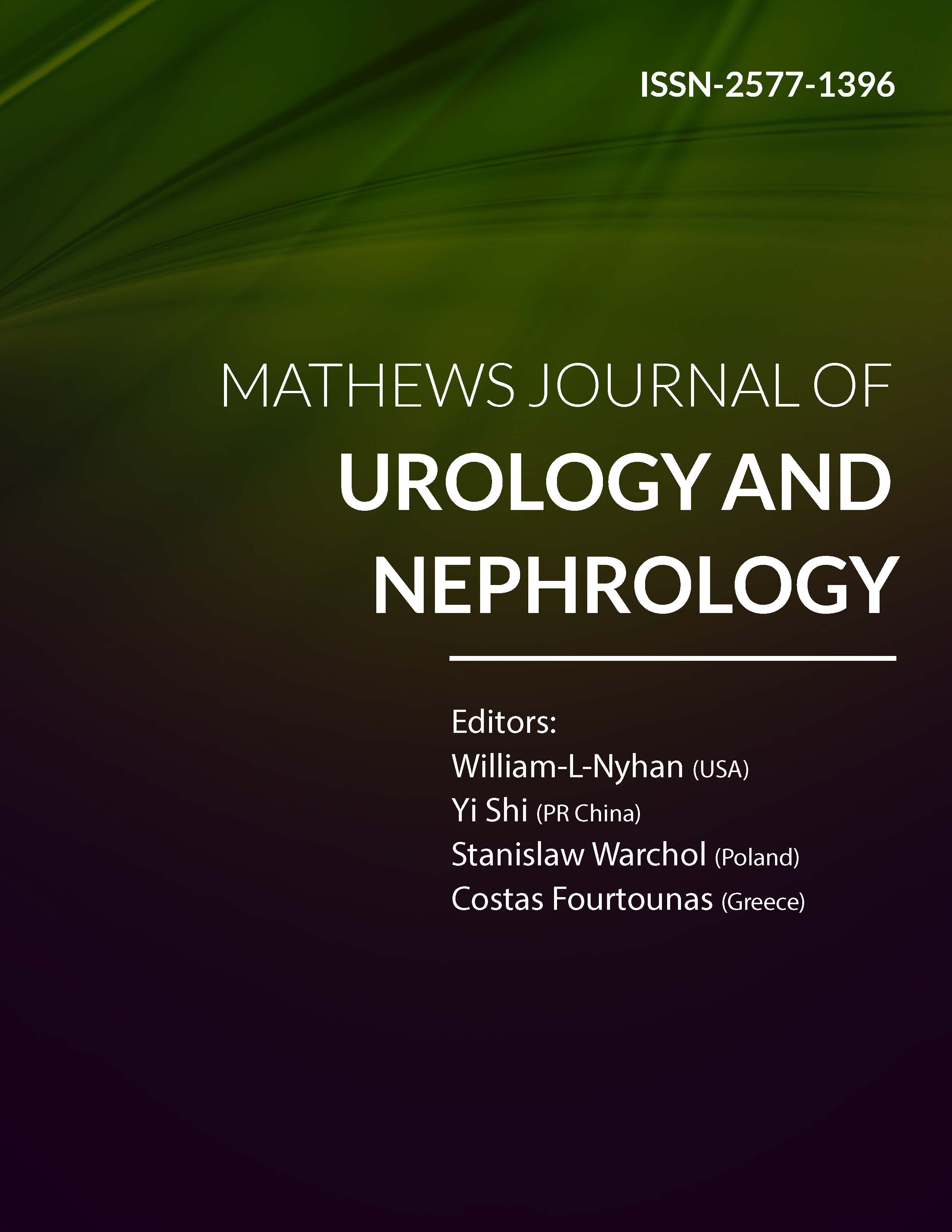
Information Links
Current Issue Volume 6, Issue 2 - 2024
Managing of Pyonephrosis: About 42 Cases
Doumer Abderrahmane, Alafifi Mahmoud, Safieddine Mehdi*, Moataz Amine, Dakir Mohamed, Debbagh Adil, Aboutaieb Rachid
Department of Urology, CHU Ibn Rochd, Casablanca, Morocco
*Corresponding author: Safieddine Mehdi, Department of Urology, CHU Ibn Rochd, Casablanca, Morocco, Phone: +212615964557, E-mail: [email protected]
Received Date: April 13, 2024
Published Date: May 21, 2024
Citation: Abderrahmane D, et al. (2024). Managing of Pyonephrosis: About 42 Cases. Mathews J Urol Nephrol. 6(2):21.
Copyrights: Abderrahmane D, et al. © (2024).
ABSTRACT
Introduction: Pyonephrosis is a critical complication of pyelonephritis, often precipitating swift escalation to sepsis and eventual renal function decline necessitating nephrectomy. Prompt recognition of pyonephrosis based on clinical or radiological indicators is of utmost importance in patients with pyelonephritis. This study aimed to describe the evolutionary profile of pyonephrosis after treatment by studying their epidemiological, clinical, paraclinical, and therapeutic aspects in the urology department of Ibn Rochd Hospital. Materials and methods: Descriptive retrospective study spread over a period of 5 years (2019–2023) including patients with pyonephrosis in the urology department. Results: Among 42 patients who have been diagnosed with pyonephrosis, the mean age was 42 years, and 67% were males. The most common clinical symptom was flank pain in 90.47% of cases, followed by febrile syndrome in 18 patients (42.85%). Escherichia coli were the most common causative organism in 20 (47.61%). Renal ultrasound allowed us to evoke the diagnosis in 71.42% of cases and urine CT scan confirmed diagnosis in the majority of cases. The etiology was lithiasis in 78.57% of cases. The treatment was based on broad-spectrum antibiotic therapy combined with urinary bypass. Percutaneous nephrostomy was successfully done in 40 patients (95.24%). After treatment of the acute episode, all our patients underwent nephrectomy. The outcome was reassuring in 71.44% of cases, the main complications were parietal suppuration (28.57%). The mortality was 9.52%. Conclusion: Pyonephrosis is becoming less common. Prompt intervention with antibiotics and drainage procedures, is imperative to prevent systemic complications and preserve renal function. Early detection and management of pyonephrosis is a must to prevent the onset of pyonephrosis.